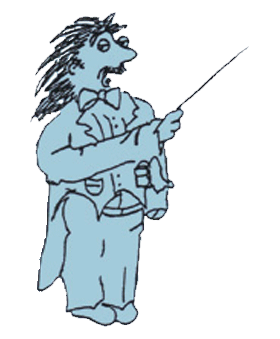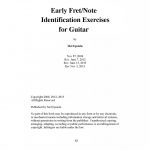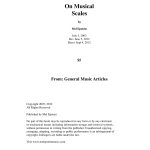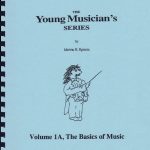Finding and pressing banjo strings at the various neck positions with appropriate force and in a timely way requires dexterity, strength and learned fine motor skills. It is something that no one can easily do right from the start.
The following exercises are designed to significantly improve those abilities.
Aim towards becoming familiar with the various frets on the neck through your noting hand and fingers (i.e. those that press strings). Understand that touch and hearing should eventually replace sight as the primary senses used when playing.
Your goal is to become able to play each of the following accurately and consistently well without needing to guide your hand and fingers with your sight.
Listen to the sound(s) you make as you work through each of the exercises. Adjust your finger placement and pressure as needed to get a better quality sound. Get to know how a correctly pressed string should feel and sound at each neck position.
Towards this end, first perform each individual exercise watching your noting hand and the neck fret(s) involved. As needed, correct hand and/or finger placement. Then continue the exercise, alternately looking at your noting hand and the neck, then not looking. Finally, do a series of the exercise not looking.
Do each exercise first with just the indicated finger. Then, include placing the lower fingers on the neck, along with the indicated finger.
Do each exercise repetitively and for multiple times. As you work through each exercise, progressively increase your rate of speed. With each exercise for each practice time, achieve an improvement before you move on to the next exercise. As you feel more secure with pressing strings well, add in naming the pitch being played.
Note that I have intentionally limited the neck positions addressed to the first set of four available. That is because they are normally the initial neck positions learned. However, these same techniques can be applied to the other positions from this initial set further up the neck.
“LH” represents Left Hand and is meant to address the hand that presses the strings. If you play the banjo left-handed (meaning that you pluck with your left hand and press strings with your right hand, replace “LH” in the instructions below with “RH”(Right Hand). To get an idea of what sounds and musical effects are possible with expert banjo playing, listen to recordings of great artists on this instrument. Suggested artists include Fred Van Eps, Charlie Poole, Bascom Lamar Lunsford, Stringbean (Dave Akeman), Dock Boggs, Ralph Stanley, Roscoe Holcomb, Pete Seeger, Erik Darling, Douglas Dillard, Eric Weissberg, (Uncle) Dave Macon, John Hartford, Earl Scruggs, Bill Keith, Don Reno, Mike Seeger, John McEuen, J. D. Crowe, Tommy Makem, Tony Trischka, Bela Fleck.
– 1 –






